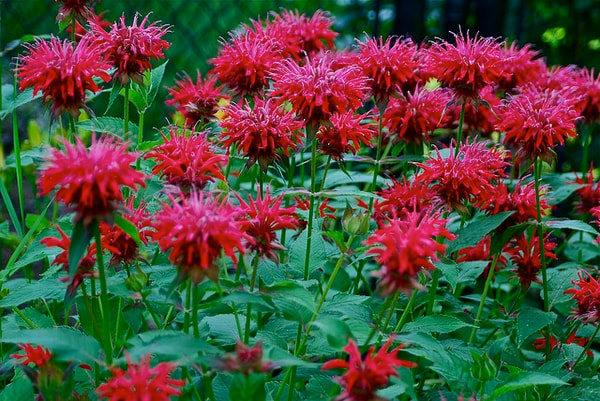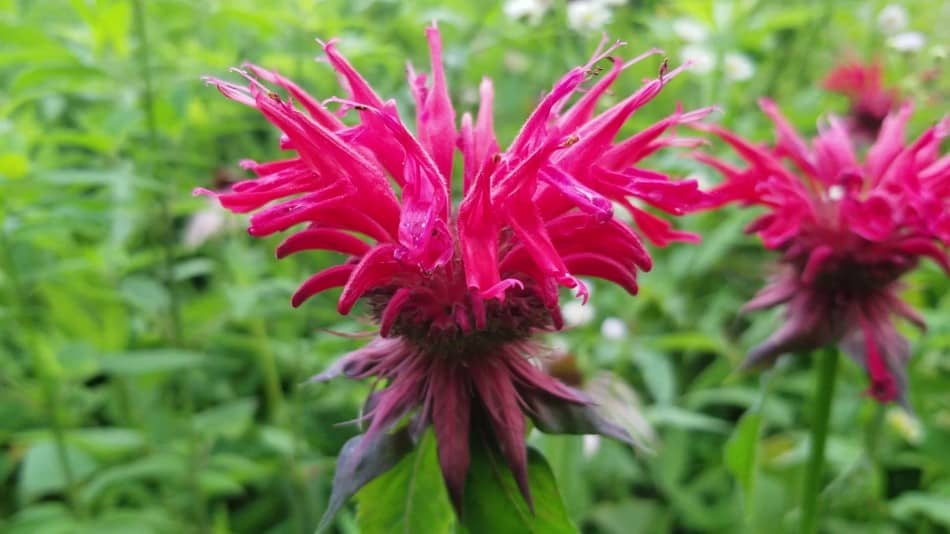Scarlet Beebalm
Monarda didyma
Bee balm is an herbaceous perennial in the Lamiaceae (mint) family. Native to the North Carolina mountains, it may be seen along the Blue Ridge Parkway flowering during the summer months.
This plant prefers moist, well-drained soils and full sun but will tolerate some shade. Bee balm can reach a height of 4 feet and will spread rapidly by underground stolons. Blossoms attract bees, hummingbirds, and butterflies, and the leaves have a minty aroma when crushed.
Bee balm provides color and contrast for the perennial border, cottage garden, specimen planting, native and pollinator garden, meadow, naturalized planting, and along ponds or streams. It is used in herbal medicine, and its flowers are edible.
Quick ID Hints:
- Stems are erect and square with opposite leaves
- Leaves are coarse, pubescent, minute axillary leafy shoots
- Inflorescence is leafy-bracketed, dense glomerules
- Flowers are two-lipped, elongated, thin corolla tubes

